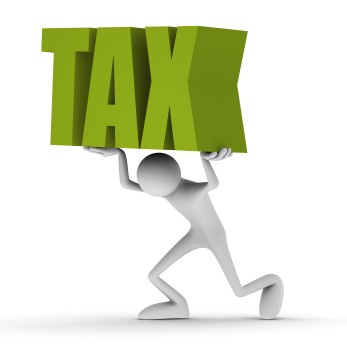It’s that time of year again, when we dig deep into our shoeboxes full of receipts and wait eagerly for official tax documents toarrive in the mail. Are you ready for it this year? Did you keep a good  record of all the charitable contributions you made, the receipts you can write off? Are you aware of all the incentives you might qualify for?
record of all the charitable contributions you made, the receipts you can write off? Are you aware of all the incentives you might qualify for?
Most of us aren’t. Don’t worry, you still have time to get it all in order. Here are the six steps to get ready for tax season.
1. Get organized
Try to set aside at least one weekend to get your tax receipts and documents in order. If you’re filing on your own return, you may need an extra day to sit down and input the numbers. Find the obvious stuff first: T4 slips, or if you’re self-employed all your invoice advice documents. Print out the official RRSP tax receipts and track down all your official charitable contribution documents.
2. Inquire about All Incentives
Visit the Canada Revenue Agency (CRA) website to investigate the incentives you and your family qualify for. Check out things like the child fitness credits, moving credits and education credits. There are numerous tax incentives that you may be able to take advantage of. Live agents are also on hand to answer tax questions and you can call in anonymously. Talk to colleagues doing a similar job and cross-reference each of your returns to make sure you’re not missing anything.
3. Using a Professional vs. Going it Alone
If you have a particularly complicated tax return, it might be in your best interest to seek the advice of a professional. If your tax refund is fairly simple you can use one of the reputable online tax filing programs to complete your refund. Remember to file online, sending your refund through mail delays your process by up to six weeks.
4. Have a Plan if you Owe Money
If your calculations show you owe money to the CRA, start putting that money away now. This will help you save enough to pay the balance off before it costs more in the form of interest and penalties. The faster you pay off your tax bill, the better.
Also investigate what changes you need to make this year to avoid paying next year. One of the easiest ways to lessen your tax impact is by contributing to your RRSP. Check the Notice of Assessment you received last year. You can calculate how much room you have.
5. Income Splitting
You can reduce your tax bill significantly by implementing income-splitting strategies if your spouse is in a lower income bracket. When you retire and withdraw money from your RRSP you will be taxed. By setting up a Spousal RRSP, you can transfer a portion of that income into your spouse’s RRSP to be taxed at lower rates upon withdrawl by your spouse after age 65. The contributor to the Spousal RRSP is able to bring their contribution room down and still enjoy the benefit of getting a larger refund.
6. Learn from your Mistakes
Start planning now for the 2013 tax season. Create a filing system to keep all your important documents organized. Have a permanent place for your records, charitable receipts and RRSP contribution documents. Using technology, such as a scanner to digitize all of your receipts and financial documents is also an efficient way to manage your documents, while removing the clutter.
Important Deadlines:
- Your RRSP deadline for contributing for the 2012 tax year is March 1, 2013.
- If you have a balance owing for 2012, it must be paid by April 30, 2013.

